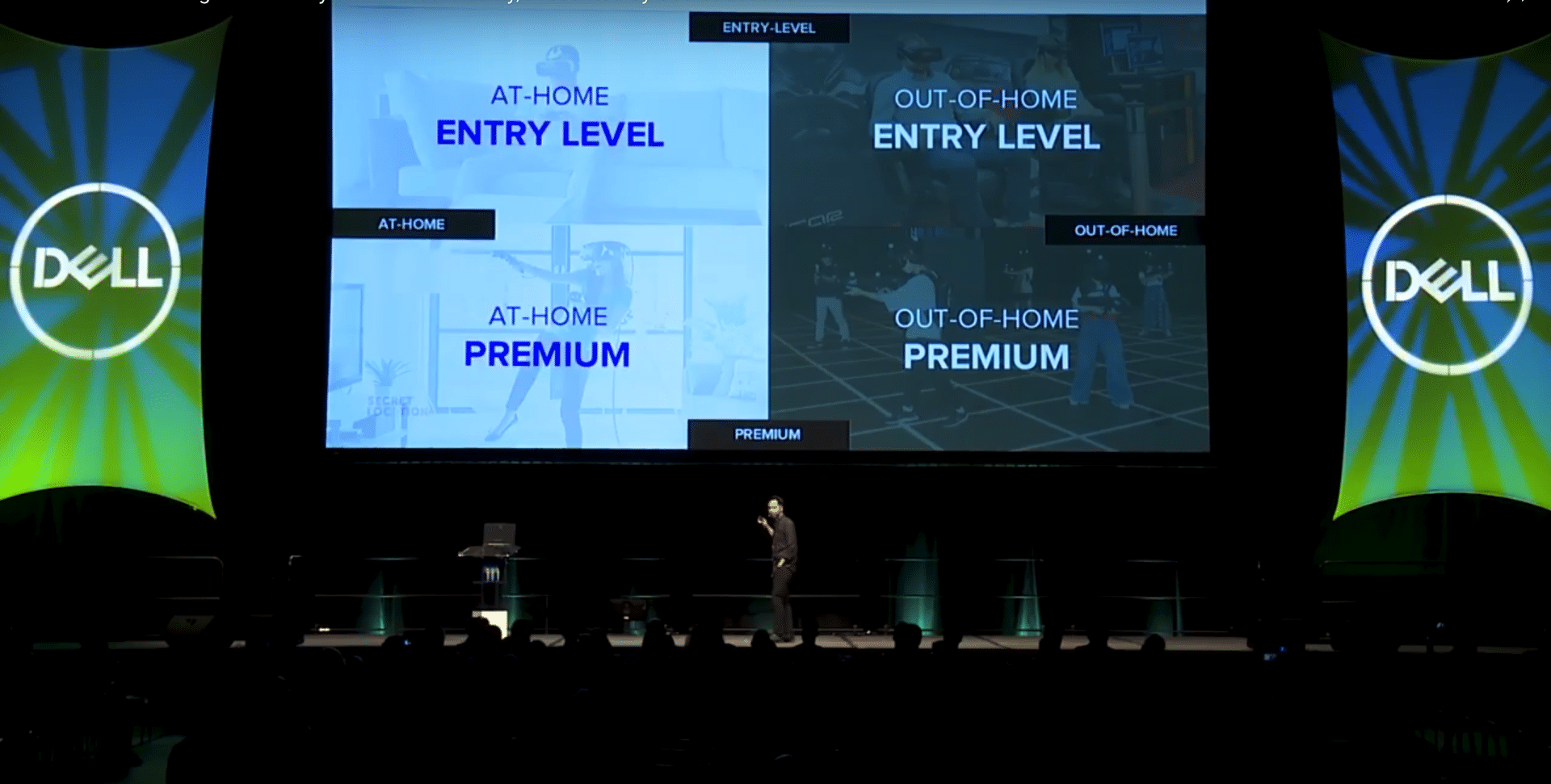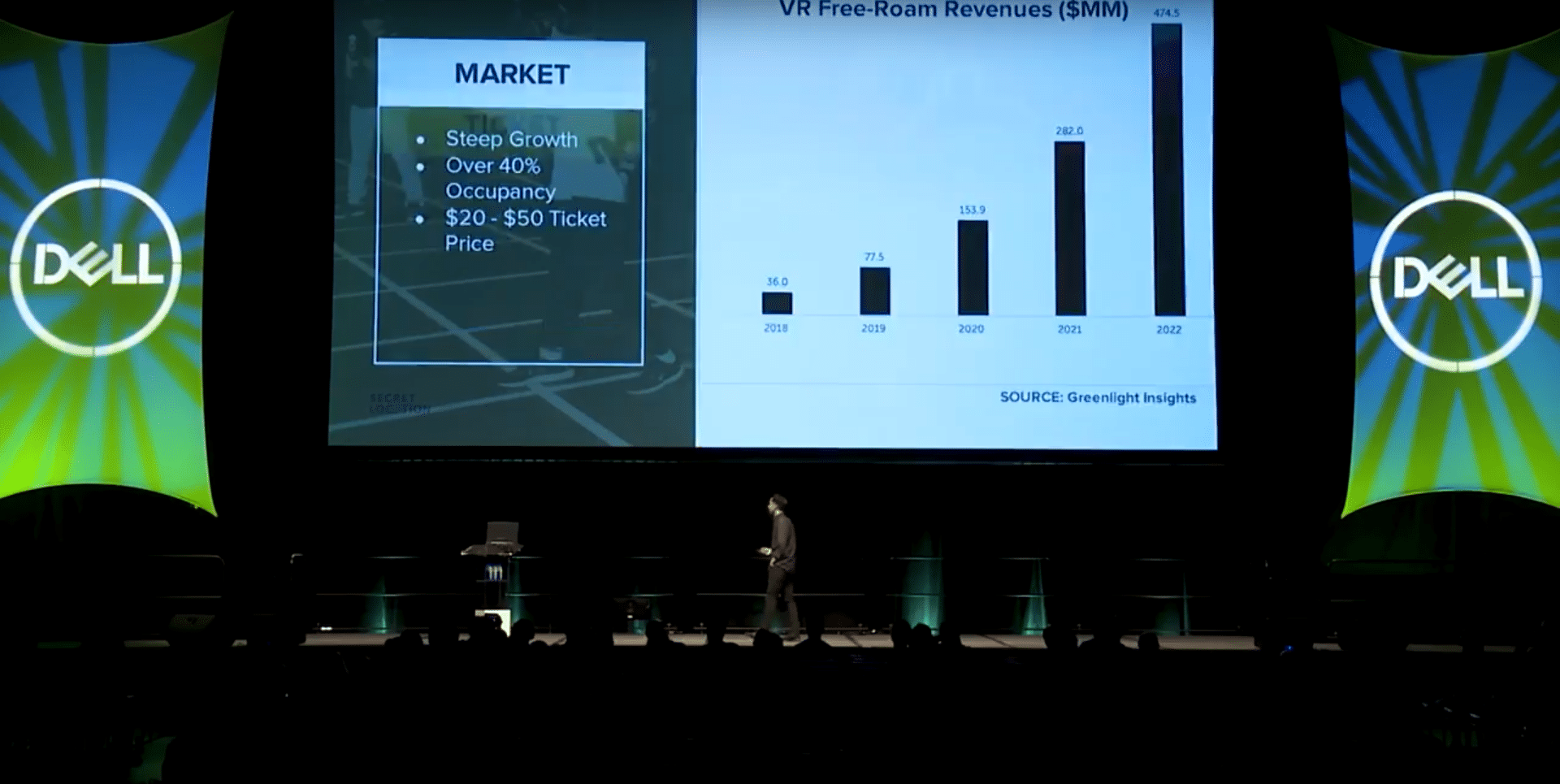
XR Talks is a weekly series that features the best presentations and educational videos from the XR universe. It includes embedded video, as well as narrative analysis and top takeaways. Speakers’ opinions are their own.
Who’s making money in early stages of VR? It’s a small club said Ryan Andal, co-founder & president of Secret Location at VRLA (video below). There are several reasons including the market’s early stage, slow adoption, chicken & egg dilemma and most of all… fragmentation.
The latter particularly vexing says Andal, as it exacerbates other factors on the list. For example low adoption kills developer incentive, which is diminished further when audiences are segmented into smaller buckets. This is mostly a function of different platforms and VR use cases.
“The market is at peak fragmentation,” he said. “There are a variety of head-mounted displays, platform, formats, peripherals and audiences. But when you break it down from an entertainment perspective, there are four main sectors that content creators have to concern themselves with.”

Those include at-home VR versus out-of-home; and entry level versus premium (four total segments). The challenge is that they each require native game development to align with unique characteristics. Variables include hardware, price, time and length of game play.
“People in the in the out-of-home sector commercially license titles to arcades,” said Andal. “But the length of game play is five to fifteen minutes… drastically different from the game that you’re designing for an at-home audience. That’s why this is so difficult: You have to version your game.”
This variability applies to monetization too. Each segment has a different revenue model. At-home entry level VR for example includes publishers like The New York Times. They monetize ads and sponsorships, which require lots of scale. For example: cross-media packages that bundle VR.
“They’re selling consolidated sponsorship packages and that’s how they’re making money in VR,” said Andal. “But the problem is that only exists with these large scale publishers that have some form of other business model that isn’t specifically just VR, because it is a small market still today.”

Moving on to the at-home premium market, the installed base is so small due to premium pricing and niche status (tier-1 headsets like Rift and Vive). This is where the chicken and egg challenge is felt most, which dampens content creators’ monetization potential and thus incentive.
“Even if you hit most of that marketplace, the average piece of content in VR costs anywhere from $500,000 to about $3 million,” said Andal. “So the likelihood that you can actually recoup those production dollars is relatively slim, and that makes it very difficult for content creators today.”
As for the out-of-home entry market, that’s has advantages for facility owners because operating costs are relatively low. But content creators get screwed because supply/demand dynamics have placed a low value on content, which amounts to a five to 30 percent revenue share for creators.
“If it’s going to be worth it for an operator to carry your title and give thirty percent of their revenue, it has to translate to the audience and be really easy to pick-up-and-play,” he said. “Very few people at this early stage of VR in general are giving up that much revenue to content creators.”

Lastly, the out-of-home premium market is challenged by the need for bespoke, purpose-built content and relatively low scale. But the economics can still be attractive, including 40 percent occupancy rates at $20-$50 per hour. Compare that with 11 percent theater occupancy rates.
“If VR is a small industry this is this is very small,” said Andal. [But] at a $20-$50 ticket price, that’s pretty significant, and it means that even if you’re making a small percentage of that revenue, you can make that money back relatively quickly with with the occupancy numbers that they’re seeing.”
The comparison to cinema also underscores a cultural bright spot for out-of-home VR. At a time when home theater technology (and rising ticket prices) drives movie-watching to the home, the opposite is true in VR. Economics to experience VR are more attractive for out-of-home options.
“Out of home entertainment isn’t dying, it’s it’s just evolving,” said Andal. “This is good news for any content creators within a new medium. We have as an industry sort of a go to market strategy that doesn’t rely on immediate large-scale consumer adoption. There’s a path to getting us there.”
See the full talk below, coded to start at the meat of the presentation.
For deeper XR data and intelligence, join ARtillry PRO and subscribe to the free ARtillry Weekly newsletter.
Disclosure: ARtillry has no financial stake in the companies mentioned in this post, nor received payment for its production. Disclosure and ethics policy can be seen here.
